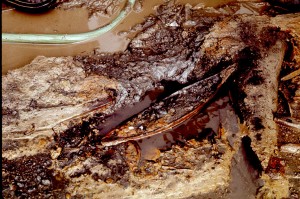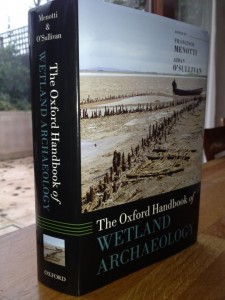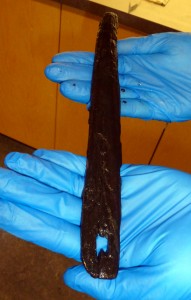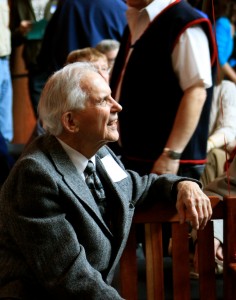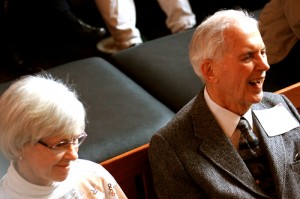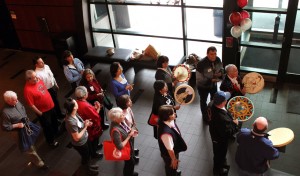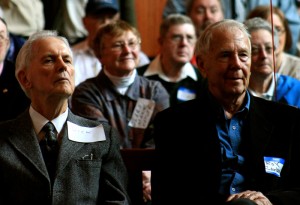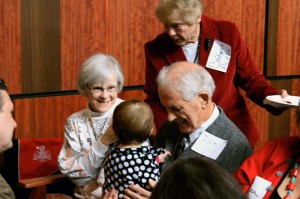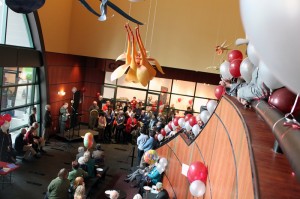Alan and all: I have some pictures of a toy canoe being excavated from the Ozette Village wet site houses and will post them here. Does anyone else from around the world have toy canoes from their wet sites? Certainly museums have several models made when canoes were remembered in this manner and sold as tourist items (one Makah model from US Smithsonian Museum pictured here).Â
Today there has been a big revival of canoe carving and journeys along the Northwest Coast–called Canoe Journeys or Paddles. The next one is a Paddle to Quinault this summer. Thousands of mostly Native Peoples attend–all are welcome for a week of Potlatching. Akira Matsui and his friends frequently visit our sites during the Canoe Journey (see his report here from last summer) so they can attend these huge celebrations.Â
 A good web site from last year’s Paddle to Squaxin–the community I worked with on the Qwu?gwes Wet site–is: http://paddletosquaxin2012.org/ and view their amazing photo gallery–and come this summer. We can all camp together on the Washington West Coast for a week of celebration! Aidan can bring his kids! And Francesco can work on his new book–it will be an official NewsWARP Coordinator meeting with Akira and friends. Dale

